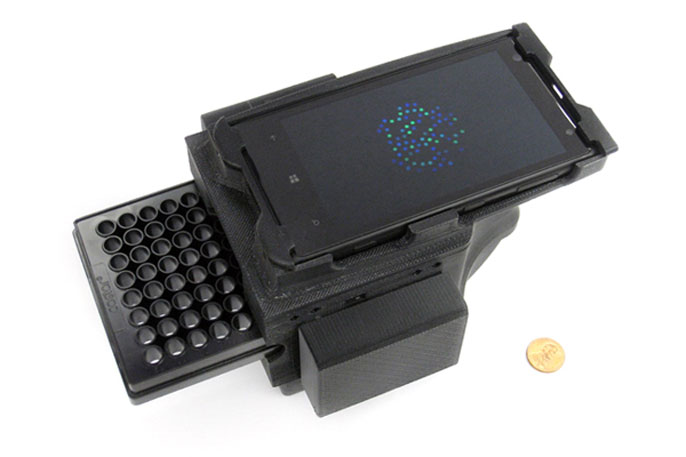
Nucleic acids, such as DNA or RNA, are used in tests for infectious diseases, genetic disorders, cancer mutations that can be targeted by specific drugs, and fetal abnormality tests. The samples used in standard diagnostic tests typically contain only tiny amounts of a disease’s related nucleic acids. To assist optical detection, clinicians amplify the number of nucleic acids making them easier to find with the fluorescent dyes.
Both the amplification and the optical detection steps have in the past required costly and bulky equipment, largely limiting their use to laboratories.
In a study published online in the journal ACS Nano, researchers from three UCLA entities — the Henry Samueli School of Engineering and Applied Science, the California NanoSystems Institute, and the David Geffen School of Medicine — showed how to take detection out of the lab and for a fraction of the cost.
The collaborative team of researchers included lead author Janay Kong, a UCLA Ph. D. student in bioengineering; Qingshan Wei, a
Solving the riddle of low-cost optical detection
The UCLA researchers focused on the challenges with
But the team discovered an additive that stabilized the intercalator dyes and generated a large increase in fluorescent signal above the background light level, enabling the test to be integrated with inexpensive cellphone based detection methods. The combined novel dye/cellphone reader system achieved comparable results to equipment costing tens of thousands of dollars more.
To adapt a cellphone to detect the light produced from dyes associated with amplified DNA while those samples are in standard laboratory containers, such as well plates, the team developed a
«Currently nucleic acid amplification tests have issues generating a stable and high signal, which often necessitates the use of calibration dyes and samples which can be limiting for
Additionally, the authors emphasized that the dye combinations discovered should be able to be used universally to detect any nucleic acid amplification, allowing for their use in a multitude of other amplification approaches and tests.
Making diagnosis cheaper and more accessible
The team demonstrated the approach using a process called
The newest demonstration is part of a suite of technologies aimed at democratizing disease diagnosis developed by the UCLA team. Including
This interdisciplinary work was supported through a team science grant from the National Science Foundation Emerging Frontiers in Research and Innovation program.


